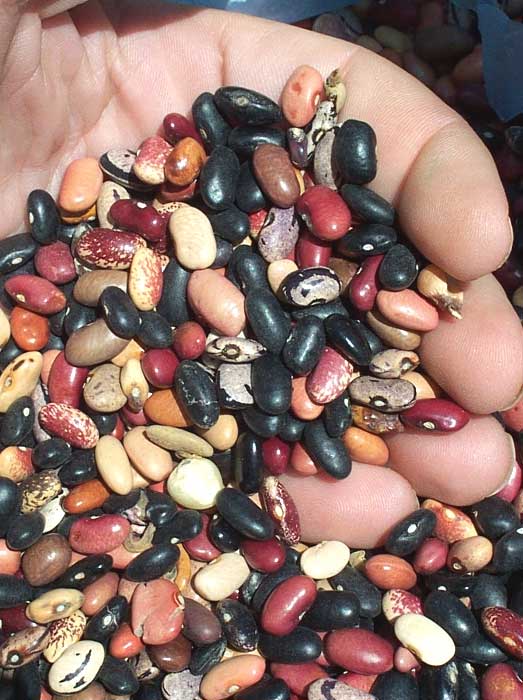Excerpts from Jim Conrad's
Naturalist Newsletter
from the March 10, 2007 Newsletter issued from Sierra Gorda Biosphere Reserve, QUERÉTARO, MÉXICO
CREOLE BEANS
The other day my friend Margarita, in charge of Ecotourism here, brought me a neatly tied blue plastic bag filled with dried beans from her own garden. What a pretty sight those beans were, a rainbow of colors, and with so many different designs, so shiny, rounded, and making clicking sounds when I shook the bag, it made me happy to look at them. You can see them below:

The next day as I was pouring a handful into my solar oven's black crock my friend Don Emeterio came along. He agreed that they were pretty and said that these were what everyone around here grew, "frijol criollo," or Creole Beans. I asked if so many kinds of beans would be harvested in an average crop. He looked at my beans closely and told me that I only had four different kinds, but that there were others.
My black beans were "frijol negro," the tan ones "bayo," the reddish kidney-bean-colored ones "relumbrantes," and the black-and-white striped ones were "ojos de cabra," or "goat's-eyes." Don Emeterio said that in former times you'd find "shimates," the very best, but now shimates are grown only across the mountains, in Huastec territory, I think he motioned toward.
The wonderful thing about these beans isn't that they are so colorful, however, but that they cook relatively quickly and taste so good. Until now I've avoided cooking beans here because I've assumed that it would take as long to cook them as it does our dried beans bought in plastic bags in the north. But these cook in a fraction of that time. The secret may be that they're not as thoroughly dried as ones sold up north, but I'm not sure.